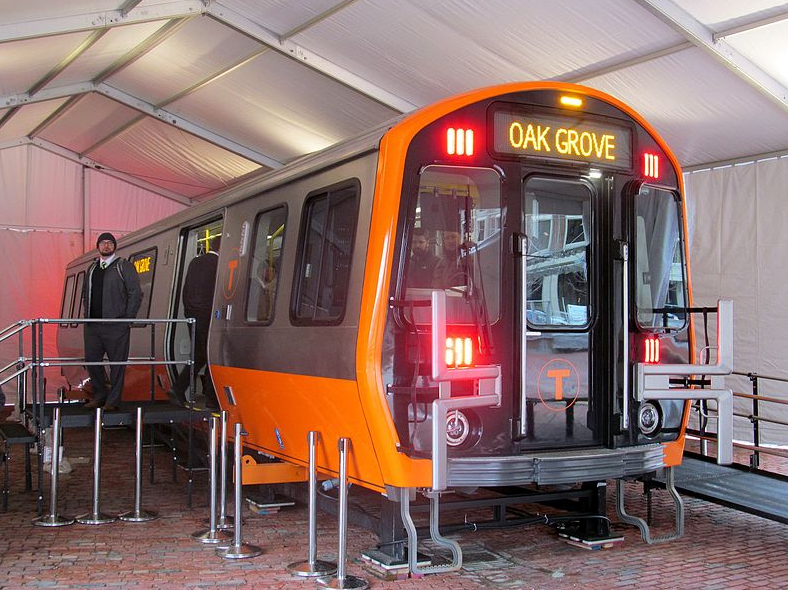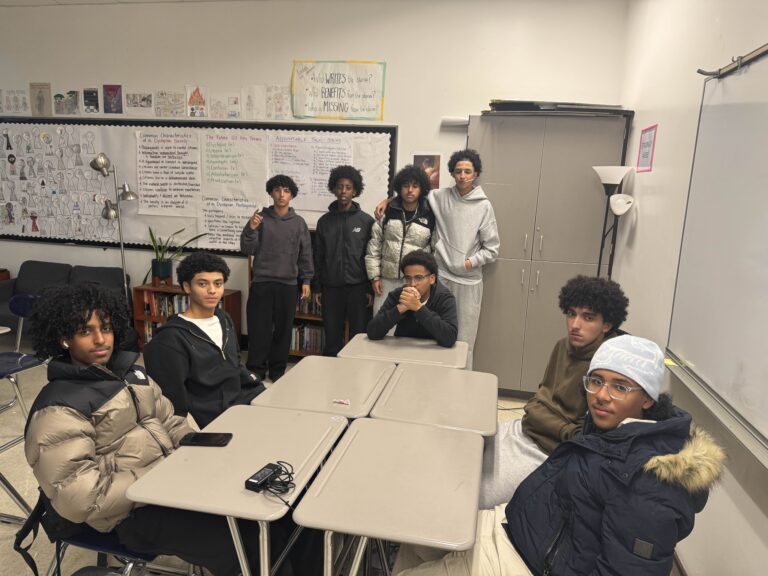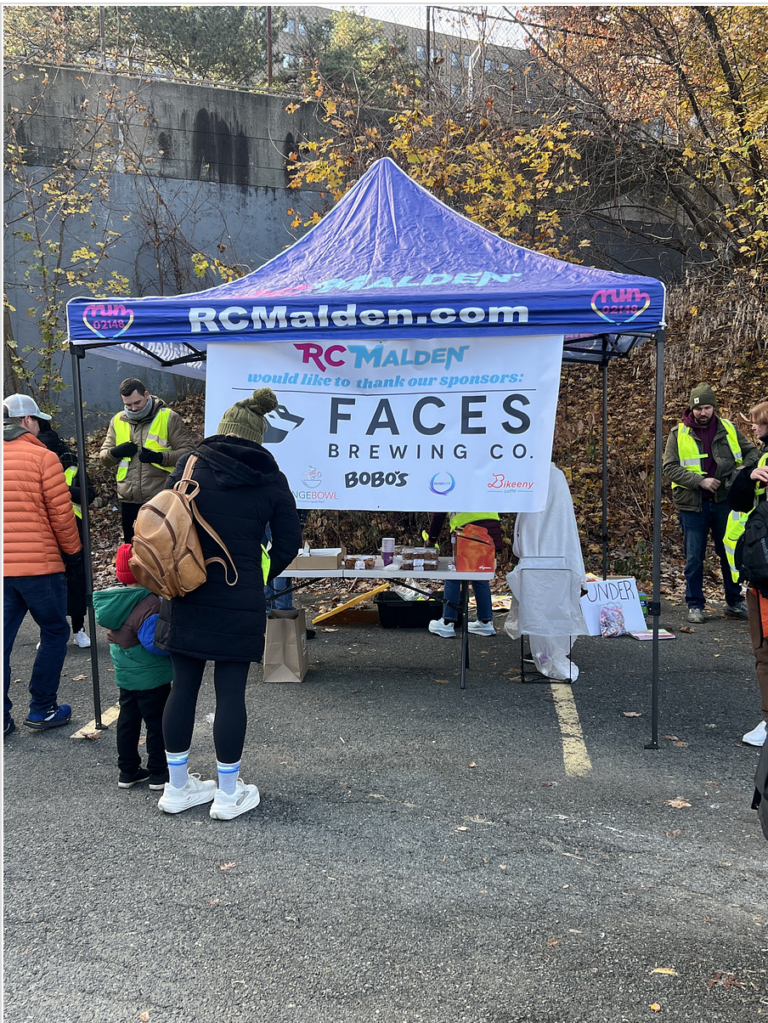
Mockup of the new Orange Line train on display at City Hall Plaza in April 2017. Photo from Wikimidedia.
By Julie Yu and Jennica Ruan
The preview of the new Massachusetts Department of Transportation (MBTA) orange line trains were first showcased in the Spring of 2018. The cars feature a modern and more pristine design.
The current orange line cars have been around since the late 1970s, making them almost 40 years old. The MBTA is a daily source of transportation for the people of the Boston area. With many people riding it to and from work or school, the current model is not fit for everyday use, especially during rush hour.
The amount of seating in the new design cars is one of the most noticeable assets when viewing the pictures from the preview. Although there is not as much seating in the new cars, they provide much more standing space for passengers, which increases the maximum capacity in each cart. The standing space makes it more convenient for those who are traveling with strollers, luggage, or mobility devices.
The MBTA is looking to efficiently transport passengers to their destinations. A subtle change to the new cars are the wider doors. The change was made to get passengers in and out of cars quicker to spend less time stopping at stations and overall reduce the travel time.
The MBTA has incorporated modern passenger information systems such as the LED station announcement signs, the PA system, LED lighting, and LCD monitors with additional information.
New security cameras have been integrated, where the MBTA Operations and Police to view the footage in real-time. The operators are able to see the area of a passenger emergency intercom (PEI) if activated by a passenger in order to access the situation.
Testing has been conducted in China and has been completed in Boston. Many people have caught a glimpse of the new cars in action at Wellington Station. The first model was made primarily for testing only, to ensure they meet all structural requirements. Parts of the first model were destroyed during the testing process. The first complete working car took about six months to build.
Trish Foley, the Legislative Liaison for the MBTA, stated that they had purchased 152 new cars when they are only planning on replacing 120 cars. She explained that that way the “system can be upgraded to run trains more frequently, thus spreading out the many passengers over more trains than currently available.” This is a major benefit since the overcrowding issue will be reduced and attract more passengers who need a quick and resourceful transportation system.
Foley stated that in the new cars they “use modern materials and a color scheme proposed by an industrial designer.” The seat cushions are no longer covered in fabric “which makes them easier to clean and more hygienic,” said Foley.
Sophomore Eva Tu thinks that the current cars are due for some changed. She explained how the cars are becoming outdated and old, both on the inside and the outside. From pictures she has seen Tu is already a fan of the new cars. She mentioned that the new cars already look more “bright and spacious” for passengers. Tu also mentioned how modernized and the high tech that was integrated into the new cars. Despite these changes, Tu thinks that her transportation experience would not be altered much other than the “appearance of the cars itself”.
Sophomore Ava Pizziferri thinks that the new car design is “more sleek and modern […], which will help cater to the new generations using public transportation and make it more convenient and comfortable for [passengers].” Pizziferri stated that it will make her feel more comfortable knowing that the seats and everything else are new and cleaner than before.
Junior, Matthew Mijares believes that the modern design contributes and adds the “Boston’s overall image.” Mijares stated that the current “cars need more space and need to be cleaner. He hopes that by “having new cars [it] will prevent delays, allowing trains to arrive on schedule more often and to consistently carry passengers.” Mijares said that with the “new cars [having] larger capacities […] [the] overcrowding within trains” can be limited or reduced.
The new trains will debut in early 2019. The cars will be replaced “trainset by trainset (6 cars).” As the old cars are being replaced, the new ones will also be in service until all the old cars are no longer available.




